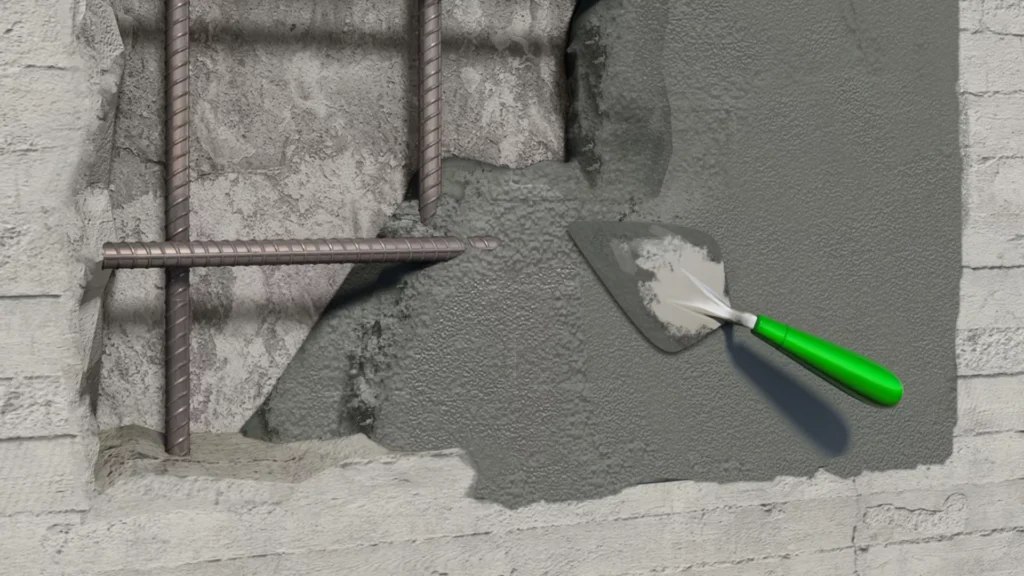Unveiling the Essence: Understanding Concrete Degradation Mechanisms in Concrete Repair
by siteadmin

Concrete, the cornerstone of modern infrastructure, stands tall as a symbol of strength and durability. Yet, even this seemingly invincible material succumbs to the forces of time and nature. Concrete degradation is an unavoidable reality, but understanding its underlying mechanisms is crucial for effective repair and preservation. In this blog post, we delve into the intricacies of concrete degradation, shedding light on its various manifestations and the strategies employed in concrete repair.
The Culprits:
Identifying Concrete Degradation Mechanisms Concrete degradation is a multifaceted process driven by various factors, both internal and external. Among the primary culprits are:
- Chemical Attack: Chemical reactions with environmental agents such as chloride ions, sulfates, and acids can corrode concrete, weakening its structure over time. This phenomenon is particularly common in coastal areas where exposure to saltwater accelerates corrosion.
- Freeze-Thaw Cycles: In colder climates, the repeated cycle of freezing and thawing can cause microcracks to develop within the concrete. As water expands upon freezing, it exerts pressure on the concrete matrix, leading to cracking and spalling.
- Alkali-Silica Reaction (ASR): ASR occurs when reactive silica aggregates in concrete chemically react with the alkaline cement pore solution, resulting in the formation of a gel-like substance. This gel expands over time, causing internal pressure and cracking.
- Physical Abrasion: Abrasion from vehicular traffic, abrasive materials, or impact can wear away the surface of concrete, compromising its integrity and aesthetic appeal.
Understanding these degradation mechanisms is paramount in formulating tailored repair strategies that address the root cause of deterioration.
Concrete Repair:
Navigating the Solutions Effective concrete repair necessitates a comprehensive understanding of the degradation mechanisms at play. Here are some common repair techniques employed to combat concrete degradation:
- Surface Repairs: Surface defects such as cracks, spalls, and scaling can often be remedied through techniques like patching, overlaying, or surface sealing. These methods restore the structural integrity and protect the concrete from further deterioration.
- Corrosion Mitigation: To combat corrosion-induced degradation, techniques such as cathodic protection, corrosion inhibitors, and surface coatings are utilized. These interventions aim to inhibit the corrosion process and extend the service life of the concrete structure.
- Expansion Joint Installation: Installing expansion joints helps accommodate the thermal expansion and contraction of concrete, reducing the risk of cracking due to temperature fluctuations.
- Moisture Management: Proper drainage systems and waterproofing membranes are essential in mitigating the effects of moisture-related degradation, such as freeze-thaw damage and ASR.
- Structural Strengthening: In cases of severe degradation or structural deficiencies, strengthening techniques such as external post-tensioning, fiber-reinforced polymers (FRP), or carbon fiber reinforcement may be employed to enhance the structural capacity of the concrete elements.
Concrete degradation is an inevitable consequence of time and environmental exposure, but it is not an insurmountable challenge. By understanding the underlying mechanisms of degradation and employing appropriate repair techniques, we can prolong the service life of concrete structures and ensure their continued functionality and safety. As stewards of our built environment, it is imperative that we prioritize proactive maintenance and repair practices to preserve the integrity and resilience of our infrastructure for generations to come.
Concrete, the cornerstone of modern infrastructure, stands tall as a symbol of strength and durability. Yet, even this seemingly invincible material succumbs to the forces of time and nature. Concrete degradation is an unavoidable reality, but understanding its underlying mechanisms is crucial for effective repair and preservation. In this blog post, we delve into the…
Recent Posts
- Roofing Company Savannah Sheds Light on the Lifespan of Roofs: How Long Should a Roof Last?
- Cost of Installing a Pool in Cape Coral, Florida: A Rough Guide
- Overland Park KS Painters Provides Insight: Essential Questions to Ask Your House Painter
- Is Stamped Concrete Cheaper than Regular Concrete? Debunking Myths with Columbus Stamp Concrete
- New Orleans Concreters Advocates for Stamped Concrete Driveways as the Ultimate Choice for Durability and Style
